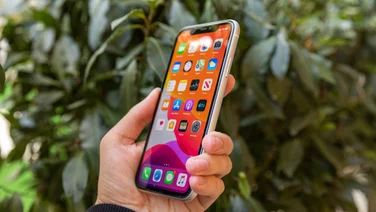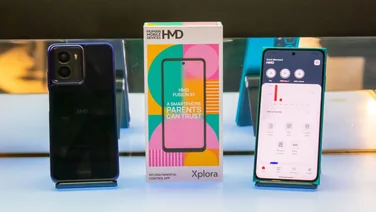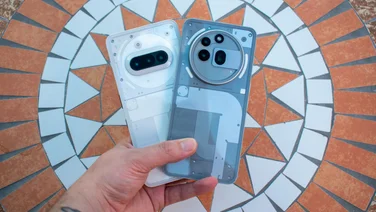To help us provide you with free impartial advice, we may earn a commission if you buy through links on our site. Learn more





The Ascend P7 is Huawei’s flagship phone for 2014 and Huawei has pulled out all the stops to make it an interesting handset. With Corning Gorilla Glass lining the front and rear of the phone, the P7’s flat design is very reminiscent of Sony’s Xperia Z2. It even has a circular power button on the right hand side of the phone.

Even though it may look like a Z2 clone on the outside, the P7’s chassis is far more compact, measuring just 6.5mm thick. With a weight of 124g, it’s also much lighter and more comfortable to hold, and its brushed metal sides give it a premium feel that rivals much more expensive phones such as the HTC One (m8).
The ultra slim P7 is all the more impressive because of its large 5in screen. Due to its 1,920×1,080-resolution LCD display, the screen has a huge pixel density of 445 pixels-per-inch, beating both the Samsung Galaxy S5 and Xperia Z2. This means that text looks incredibly sharp and crisp, although you’d be hard pushed to notice the difference in day-to-day use if you were to compare each model side by side.
With so many pixels on screen, we had no trouble reading desktop-based websites such as BBC News or The Guardian. We were pleased with the Ascend P7’s overall image quality, too. With a measured huge peak brightness of 507.8cd/m2, you shouldn’t have any trouble using the P7 outside in the sun. We were also impressed with the Ascend P7’s sRGB colour gamut, as we measured sRGB colour gamut coverage of 94.4 per cent, which meant colours looked rich and accurate.
We were a little disappointed that the screen’s narrow viewing angles meant the display didn’t look as bright when it was set down on a table. Compared to the AMOLED screen of the Motorola Moto X, images did tend to look a little washed out on the P7, but we measured a contrast ratio of 923:1 and a black level of 0.55cd/m2, which is around what we’d normally expect to see.

The Ascend P7 certainly looks like a high-end smartphone, but sadly its processing performance lets it down. The P7’s 1.8GHz quad-core processor is a huge improvement over the Ascend P6’s sluggish hardware, but the P7’s mediocre score of 1,148ms in our SunSpider JavaScript benchmarks puts it squarely in line with most mid-range handsets rather than the flagship models with which it’s trying to compete. The P7’s SunSpider score pales in comparison to the lightning fast sub-400ms speed of the Samsung Galaxy S5, and even mid-range handsets such as the Motorola Moto X and Sony Xperia SP aren’t far behind with their respective scores of 1,089ms and 1,173ms. Sadly, the P7’s performance didn’t improve when we ran the SunSpider benchmark in a different browser, as using the Dolphin browser produced an even slower score of 1,443ms.

The P7’s lacklustre speed became particularly evident when we tried general web browsing. Graphics-heavy websites such as BBC News and The Guardian desktop sites often took a few seconds to load fully, and there was some judder when we scrolled through the screen. There was also a delay before our swipes took effect. This meant we’d swipe down, for instance, and there’s be a pause before the website scrolled down. This isn’t something we’d expect from a phone at this price, and when we compared these actions side by side with the cheaper Motorola Moto X, the Moto X was noticeably quicker and more responsive than the Ascend P7.
The Ascend P7’s graphics performance lagged behind the Moto X too, but the P7’s score of 7,730 (roughly 32fps) in 3DMark’s Ice Storm test means the P7 is still more than capable of handling most apps and games in the Google Play store. You may experience low frame rates in very demanding games, though, as the Ascend P7 only produced a score of 5,095 (approximately 25fps) in the 3DMark Ice Storm Extreme benchmark, but we were pleased to see a smooth 53.8fps in the Epic Citadel benchmark on High Quality.
The P7 runs Huawei’s heavily customised version of Android 4.4.2 well. Like all Huawei phones, the Ascend P7 uses the Emotion user interface, but it has the latest version so it looks particularly slick. There’s still no app tray, so all your apps have to fit on the nine available home screens, but the whole interface looks much cleaner than previous versions and app and widgets no longer look blocky and old-fashioned. You can also opt for the “Simple” home screen style instead, which uses large, simple icons.
The P7’s additional apps and software also help it stand out from the crowd. Chief among them are its handful of Smart Assistance apps that are intended to make the phone easier to use. These include a glove mode and motion control options. Enabling the latter lets you flip the phone over to mute it, shake it to rearrange apps and answer or make calls simply by raising the phone to your ear. Picking it up will also reduce the ring volume and tilting the phone will move icons and widgets. Apart from the temperamental tilt control, all of the motions worked first time when we tried them, and they’re a fun and useful addition to its set of preinstalled apps.

The P7 further distances itself from other mid-range phones with its cameras. Huawei has clearly been paying great attention to the rising trend of selfies, as there’s a high resolution 8-megapixel camera on the front of the phone in addition to a 13-megapixel camera on the back. The front-facing camera was surprisingly decent, although it often overexposed areas of bright light both in and out of doors which caused colours to look washed out as a result. In dimmer lighting conditions the colours looked much more accurate.
We also liked that when you take a selfie with the timer activated you’re prompted to look at a small window in the top right-hand corner of the screen. This is to make sure you’re looking directly at the camera. You can also set the camera to take photos automatically, either when you smile or when your voice reaches a pre-set decibel level, so that you don’t have to tap the screen manually.
There’s plenty of camera modes to try out, too, including Normal, Smart, Beauty, HDR, Panorama (or the ‘Groufie’ mode, as Huawei calls it when you’re using the front camera), Filters, Audio Note (which lets you record a 10-second audio tag after taking a picture) and Watermark (which gives you a set of stamps to add to your photos).
The ‘Groufie’ or Panorama mode is the most notable, as it lets you take wider selfie shots without everyone having to squeeze into frame. It works by asking you to take an initial portrait shot in the centre of your party and then twist your wrist to take a second and third shot either side of you. It then stitches them all together into a single widescreen image, and for the most part our attempts were fairly successful. The camera had a bit of trouble lining up complex patterns and text in the centre of the image, but it worked fine with simpler compositions.The rear-facing 13-megapixel camera also produced very reasonable pictures. There was plenty of detail in our outdoor shots, but colours didn’t look as vibrant and rich as those we took on the Moto X. However, the sky was well exposed, which is something with which a lot of cameras tend to struggle, and there was relatively little noise.

Sadly, the Ascend P7 doesn’t last long on a single charge. With the P7’s Normal power-saving mode selected, the P7’s 2,500mAh battery lasted just 6 hours and 44 minutes. Sadly, we couldn’t perform our battery test with the Ultra power-saving mode because it doesn’t let you run video. The Smart power-saving mode lasted a little longer at 7 hours and 2 minutes, but this is still very poor for a modern day smartphone. Indeed, the Ascend P6 lasted seven hours and 20 minutes in our battery test.
The Huawei Ascend P7 is a decent mid-range smartphone that does its best to stand out from the crowd with a wide range of apps and various photography modes. However, if you’re not interested in taking selfies then there very little that the P7 does better than cheaper, faster phones such as the award-winning Motorola Moto X.




